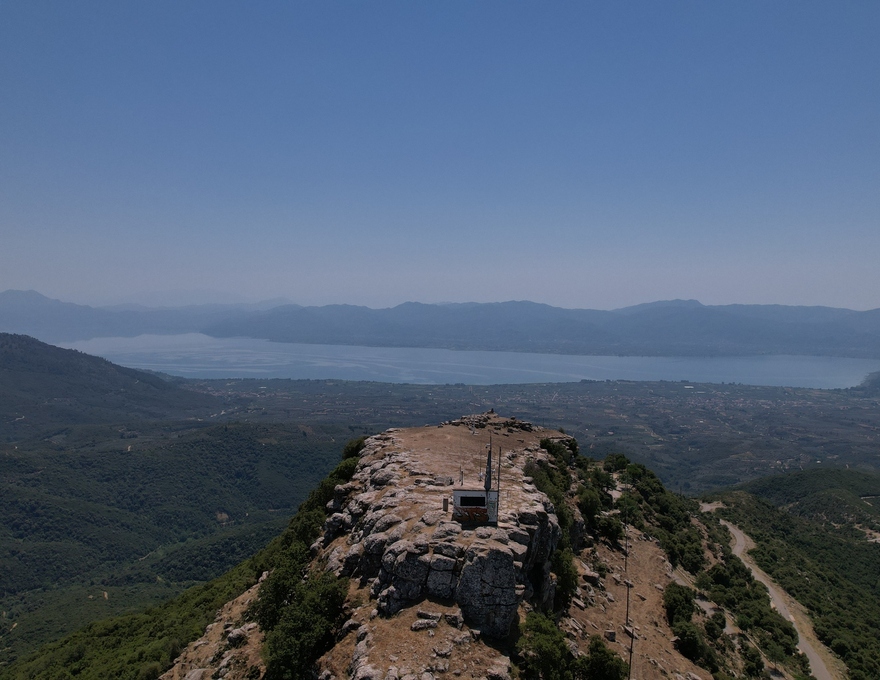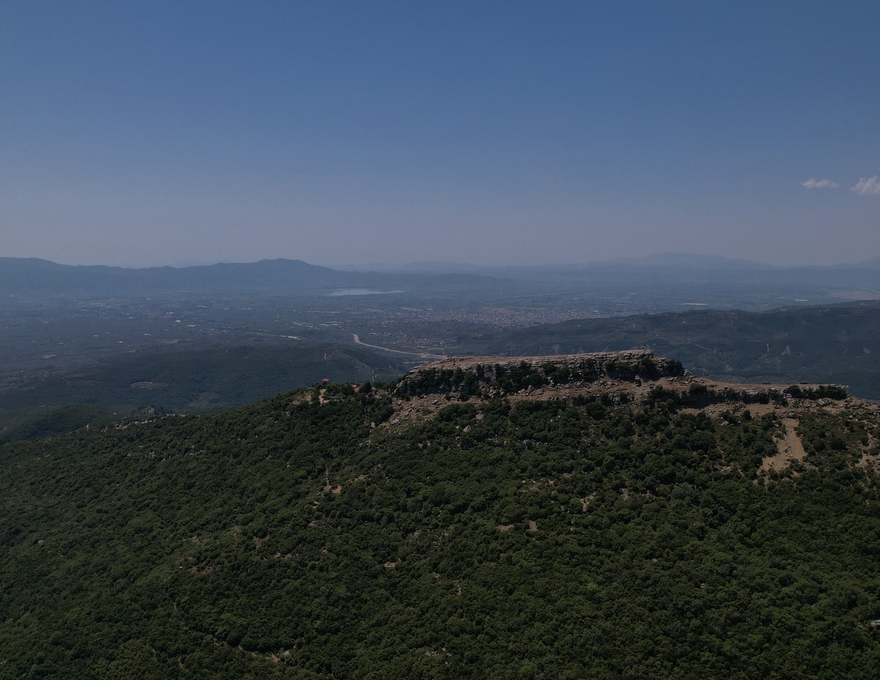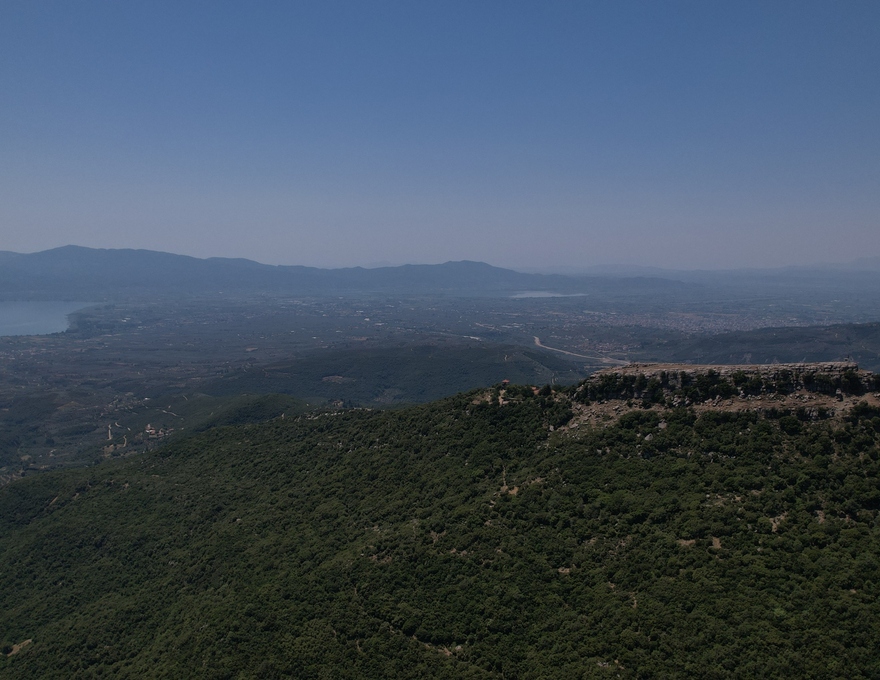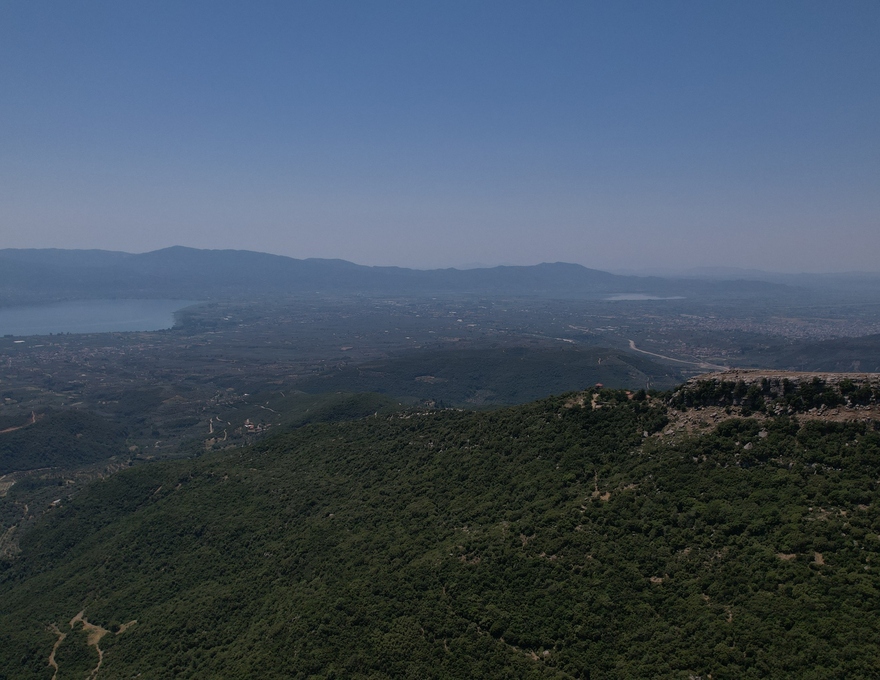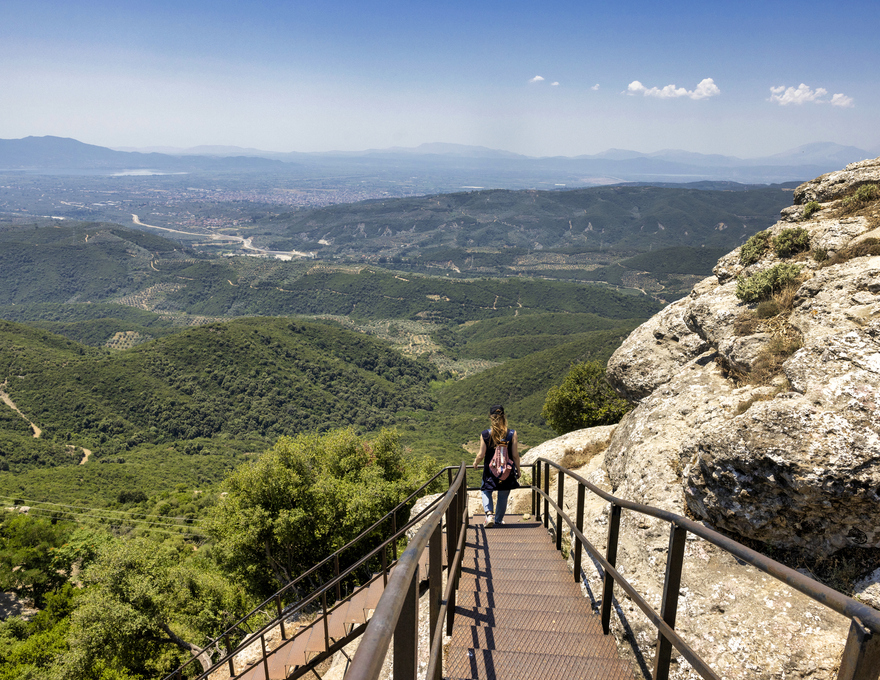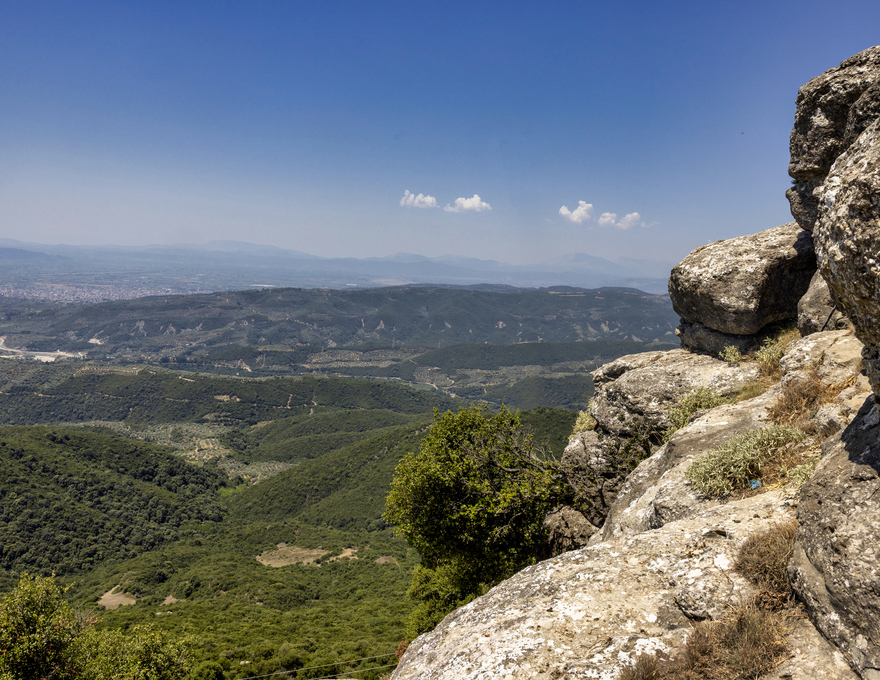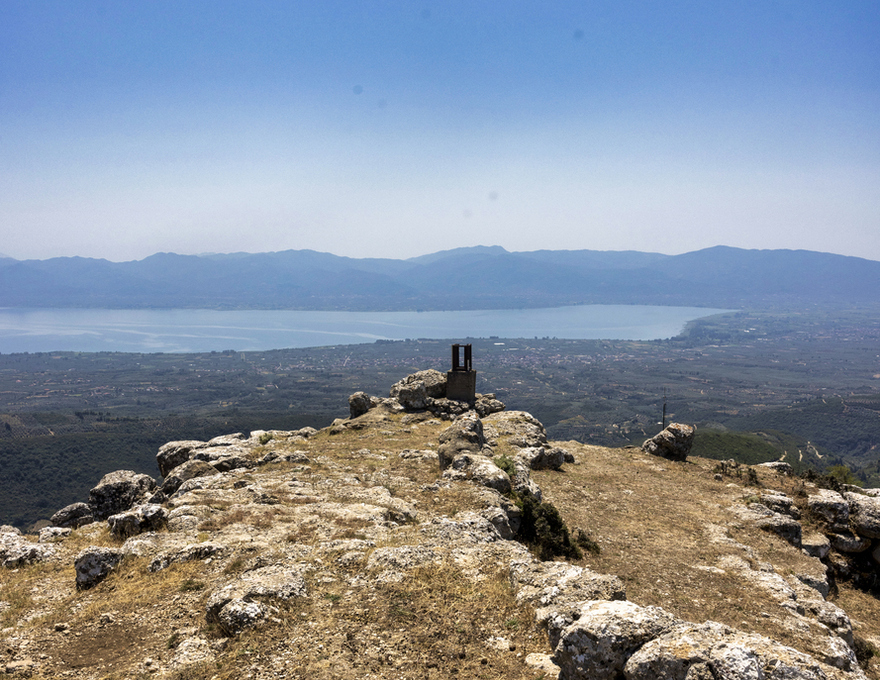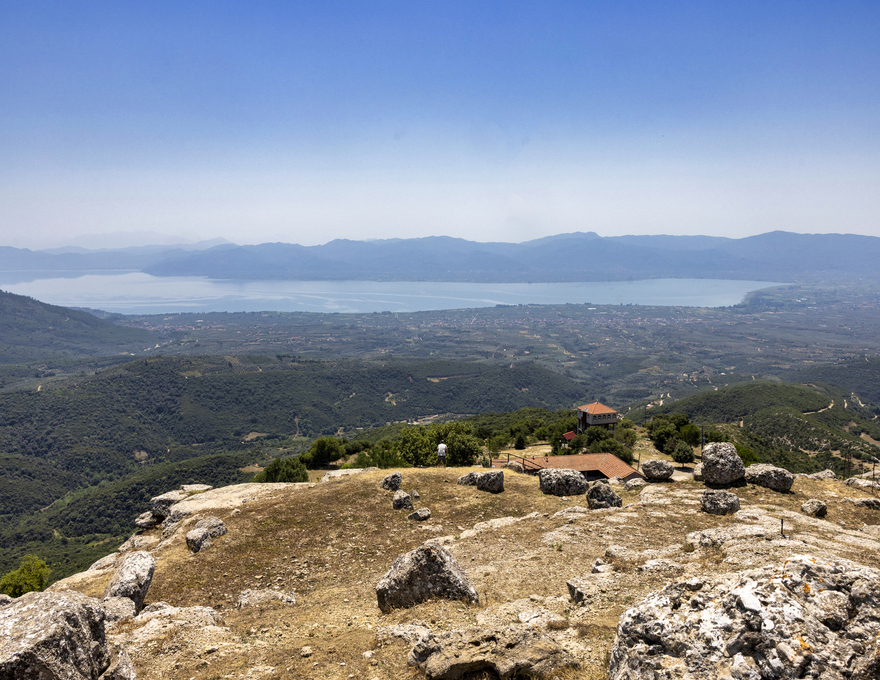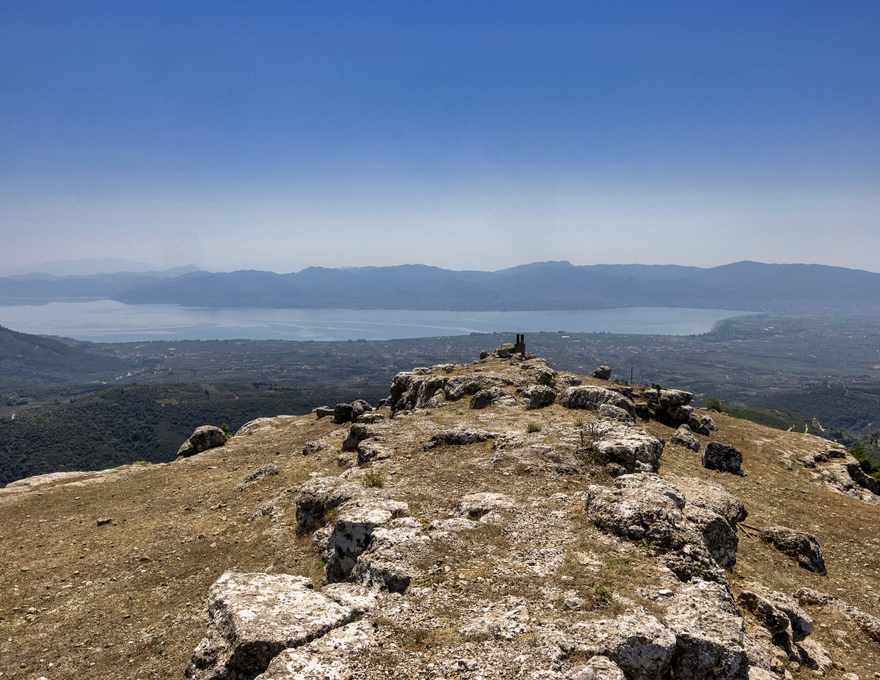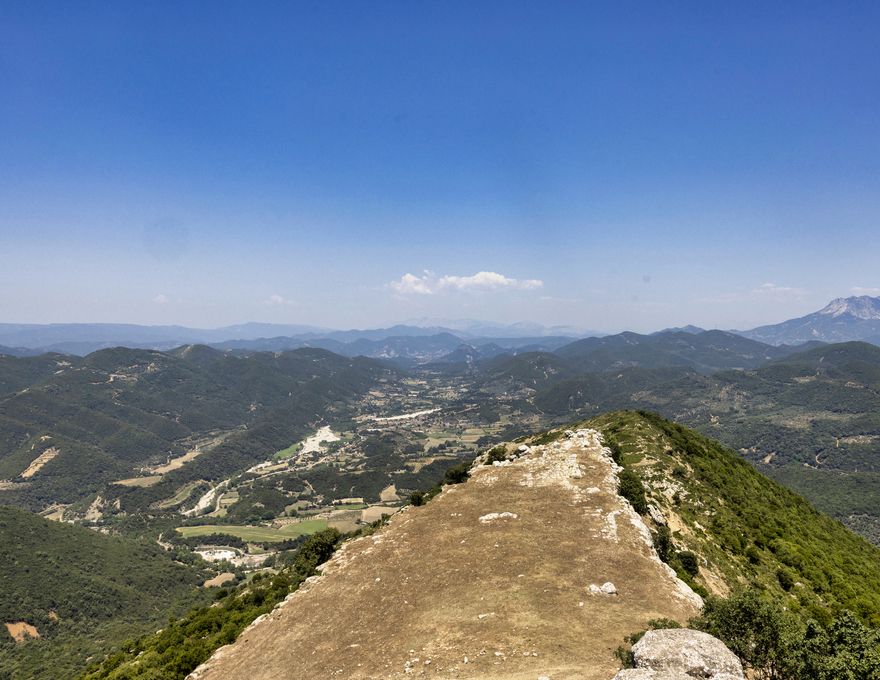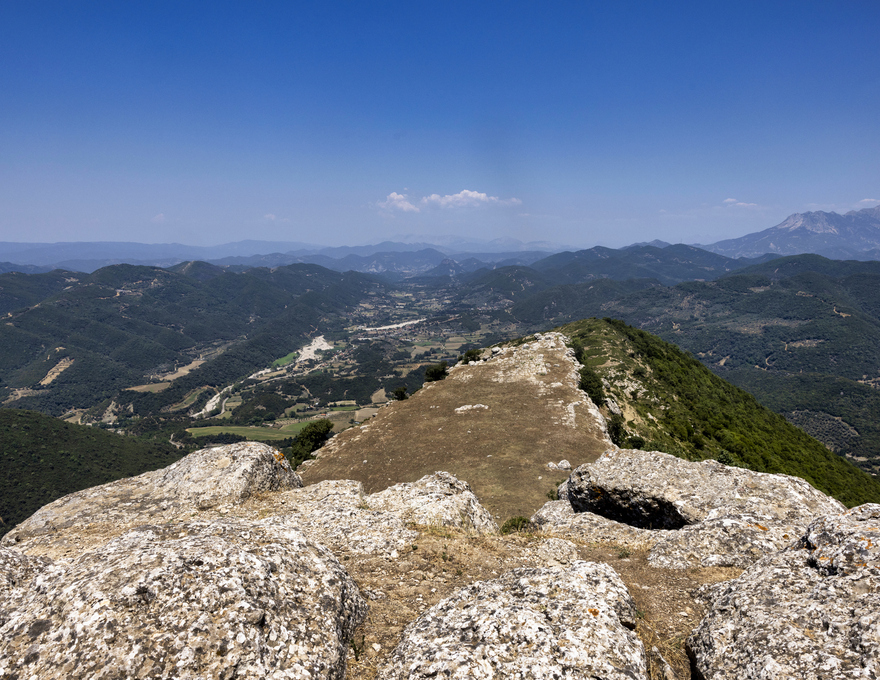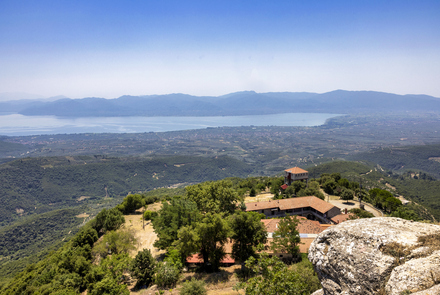At the top of Vlochos hill, on the western slope of Mt. Panaitoliko at an altitude of about 700m, the visitor can make an appointment with Greece’s ancient history. Here, there used to be a castle, which, being inaccessible and imposing, was the acropolis of ancient Thestia, a city named after the mythical king Thestius of the Aetolians.
It was later a fortress both during the Hellenistic and Byzantine periods, and concluded its basic historical cycle during the period of Turkish rule, ending up as a refuge and base for chieftains and military corps during the Greek Revolution of 1821.
In the surviving remains of the fortress – the remains of its fortifications are mainly of buildings without towers – we can distinguish the remains-creations of the Hellenistic period. However, also quite impressive are the traces of the “Cyclopean walls”, which refer us to the Mycenaean era.
Overlooking the plain of Agrinio and Trichonida, with a hard-to-grasp view that is lost in the immensity of the horizon, the fortress of Thestia is a monument of priceless value.

